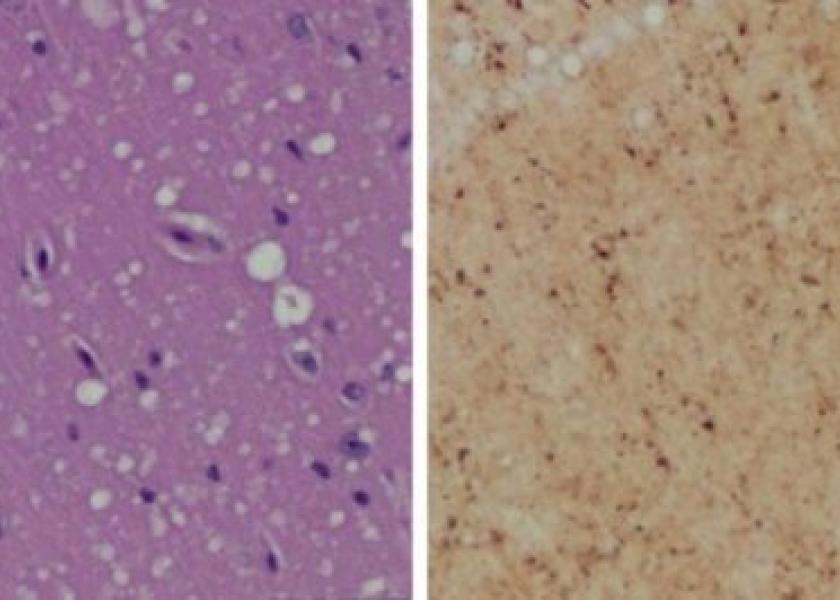New Test Diagnoses Prion Diseases in Skin Sample

Researchers have successfully identified prions in samples from live animals, shortly after exposure, according to a release from Case Western Reserve University School of Medicine.
"Currently a definitive diagnosis of Creutzfeldt-Jakob disease is dependent on the examination of diseased brain tissue obtained at biopsy or autopsy. It has been impossible to detect at the early preclinical stage," says Wenquan Zou, MD, PhD, associate professor of pathology and lead author of the study at Case Western Reserve University.
The researchers used two methods to detect prions from skin samples from rodents as early as two weeks post-exposure. Prions are the misfolded proteins associated with transmissible spongiform encephalopathies such as BSE in cattle, chronic wasting disease in cervids, and Creutzfeldt-Jakob disease (CJD) in humans.
The study compared two prion detection methods: RT-QuIC (real-time quaking-induced conversion) and sPMCA (serial protein misfolding cyclic amplification). One of the methods, RT-QuIC, has been used to detect prion particles in symptomatic CJD patients. The researchers note though, that the test normally requires invasive cerebrospinal fluid (CSF) sampling, and results could be uncertain, as not all CSF specimens from patients with prion disease are RT-QuIC positive,
In previous work, Dr. Zou and colleagues showed that autopsy skin samples from human prion disease patients exhibit prion seeding and infectivity. The next step, the researchers say, will be to develop and validate the skin prion tests for clinical use. ”Since the skin is readily accessible and skin biopsy is minimally invasive, detection of skin prions will be very useful for monitoring disease progression and assessing therapeutic efficacy during clinical trials or treatments when prion therapy becomes available, he says.
See the full release from Case Western Reserve University.







